Vitamin K2 and Pathological Calcification
For more info on health-related topics, go here: http://bit.ly/37FtWIP
Take Dr. Berg's Free Keto Mini-Course: http://pxlme.me/-i717vtY or go here: http://bit.ly/2FnbCs5
DATA:
https://www.vitamindcouncil.org/dr-cannell-on-vitamin-k2/#.XcrM0K97mM8
Download Keto Essentials
http://bit.ly/2DH0d6o
Timestamps:
0:06 What is pathological calcification?
0:45 Pathological calcification basics
2:45 About vitamin K2
4:55 What about vitamin K1?
5:47 Triage theory
6:45 Why people have calcium building up in the wrong place
7:24 What to do
7:47 A preventative measure
In this video, we’re going to talk about vitamin K2 and pathological calcification.
What is pathological calcification?
This is a condition in the body where calcium is developing in the wrong places.
It can be involved in the:
• Arteries
• Stomach
• Kidneys
• Lungs
• Breast tissue
• Cornea
Pathological calcification basics:
• Calcium is developing in the soft tissues, not in the bone
• The calcium could be developing to act as a bandaid because there is oxidation in the vascular system or a certain part of the body
• You may not have enough vitamin E or selenium to protect the oxidative lesion
• You may have ischemia adding to the problem
• Calcium tends to accumulate in certain parts of the body involving the control of pH—the tissue is too alkaline
• Nanobacteria are the smallest known bacteria. They hide in calcium shells to protect themselves, and they’re almost impossible to kill with antibiotics. They are also involved in many diseases that have calcification connected to it.
Vitamin K2 is involved in about 17 different proteins involving the movement of calcium out of the soft tissue and back into the bone. Vitamin K2 is a common vitamin deficiency.
Foods high in vitamin K2:
• Organ meats
• Egg yolks
• Butter
• Hard cheeses
• Goose liver
• Natto (fermented soybeans)
Foods rich in vitamin K1:
• Leafy greens
I believe the more common reasons why so many people have calcium building up in the wrong places are:
• They don’t have enough vitamin K1 to convert to K2
• They aren't consuming enough K2
• Antibiotics
• Statins
• Digestive issues
• Fatty liver
• Low vitamin E combined with sugar and carbs
What to do if you have calcification:
• Take fulvic acid
• Take EDTA
• Take vitamin K2
• Consume more vitamin K1 (leafy greens)
If you don’t have any calcification symptoms, as a preventative measure, you should do healthy keto.
Dr. Eric Berg DC Bio:
Dr. Berg, 56 years of age is a chiropractor who specializes in Healthy Ketosis & Intermittent Fasting. He is the author of The New Body Type Guide and other books published by KB Publishing. He has taught students nutrition as an adjunct professor at Howard University. He no longer practices, but focuses on health education through social media.
Follow us on FACEBOOK: fb.me/DrEricBerg
Send a Message to his team: m.me/DrEricBerg
ABOUT DR. BERG: http://bit.ly/37Apk6T
Disclaimer:
Dr. Eric Berg received his Doctor of Chiropractic degree from Palmer College of Chiropractic in 1988. His use of “doctor” or “Dr.” in relation to himself solely refers to that degree. Dr. Berg is a licensed chiropractor in Virginia, California, and Louisiana, but he no longer practices chiropractic in any state and does not see patients so he can focus on educating people as a full time activity, yet he maintains an active license. This video is for general informational purposes only. It should not be used to self-diagnose and it is not a substitute for a medical exam, cure, treatment, diagnosis, and prescription or recommendation. It does not create a doctor-patient relationship between Dr. Berg and you. You should not make any change in your health regimen or diet before first consulting a physician and obtaining a medical exam, diagnosis, and recommendation. Always seek the advice of a physician or other qualified health provider with any questions you may have regarding a medical condition.
-
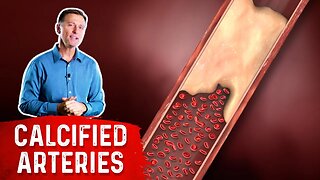 3:46
3:46
Dr. Eric Berg
3 years agoPotassium Controls Vascular Calcification
63 -
 3:52
3:52
Dr. Eric Berg
3 years agoK2 Inhibits Vascular and Joint Calcification
93 -
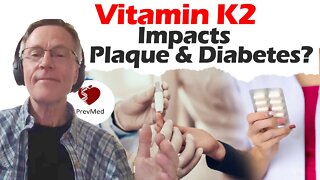 5:47
5:47
PrevMed Health
4 years agoVitamin K2 and Artery Calcification (Part 1): New Concepts
33 -
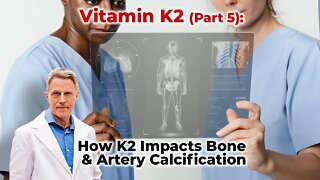 10:13
10:13
PrevMed Health
4 years agoVitamin K2 (Part 5): How K2 Impacts Bone & Artery Calcification
39 -
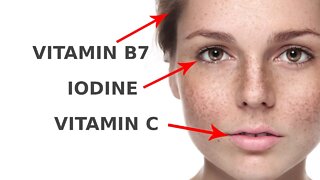 3:27
3:27
Natural Cures
7 years ago5 Vitamin Deficiencies That Show Up in Your Face
50 -
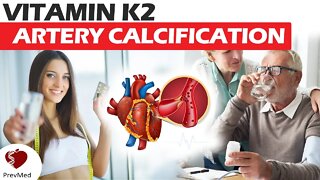 9:16
9:16
PrevMed Health
4 years agoVitamin K2 and Artery Calcification (Part 2): The Matrix Gla Protein
41 -
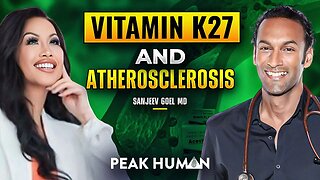 9:40
9:40
Peak Human Labs
1 year ago $0.01 earnedVitamin K27 and Atherosclerosis
45 -
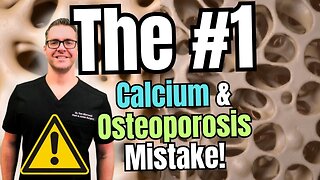 29:20
29:20
Dr. Tom Biernacki
8 months ago $0.15 earnedThe #1 Calcium, Osteoporosis & Vitamin D BIG MISTAKE
245 -
![Vitamin K Deficiency? [Vitamin K Benefits]](https://hugh.cdn.rumble.cloud/s/s8/1/z/y/Z/K/zyZKl.0kob-small-Vitamin-K-Deficiency-Vitami.jpg) 0:54
0:54
Dr. Tom Biernacki
1 year agoVitamin K Deficiency? [Vitamin K Benefits]
138 -
 4:27
4:27
PrevMed Health
3 years agoVitamin K2 & Calcified Plaque - Is It Risky to Take Calcium Out?
23